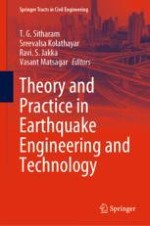2023 | Buch
Theory and Practice in Earthquake Engineering and Technology
herausgegeben von: Prof. T. G. Sitharam, Prof. Sreevalsa Kolathayar, Prof. Ravi S. Jakka, Prof. Vasant Matsagar
Verlag: Springer Nature Singapore
Buchreihe : Springer Tracts in Civil Engineering
